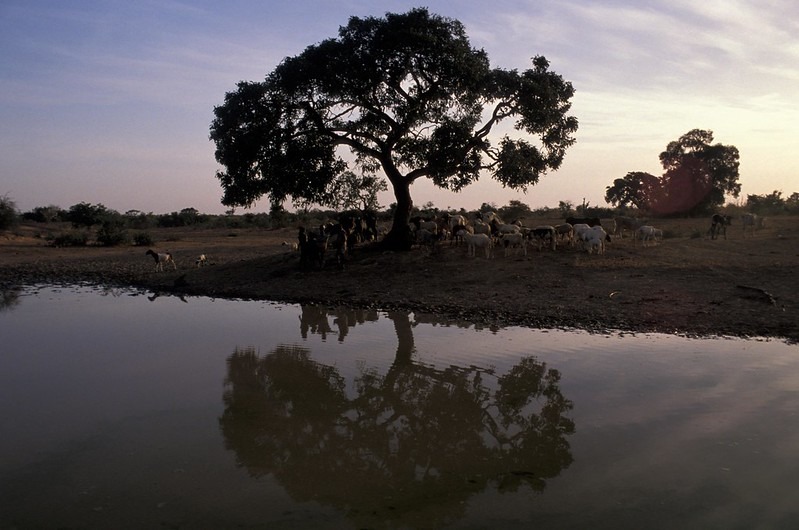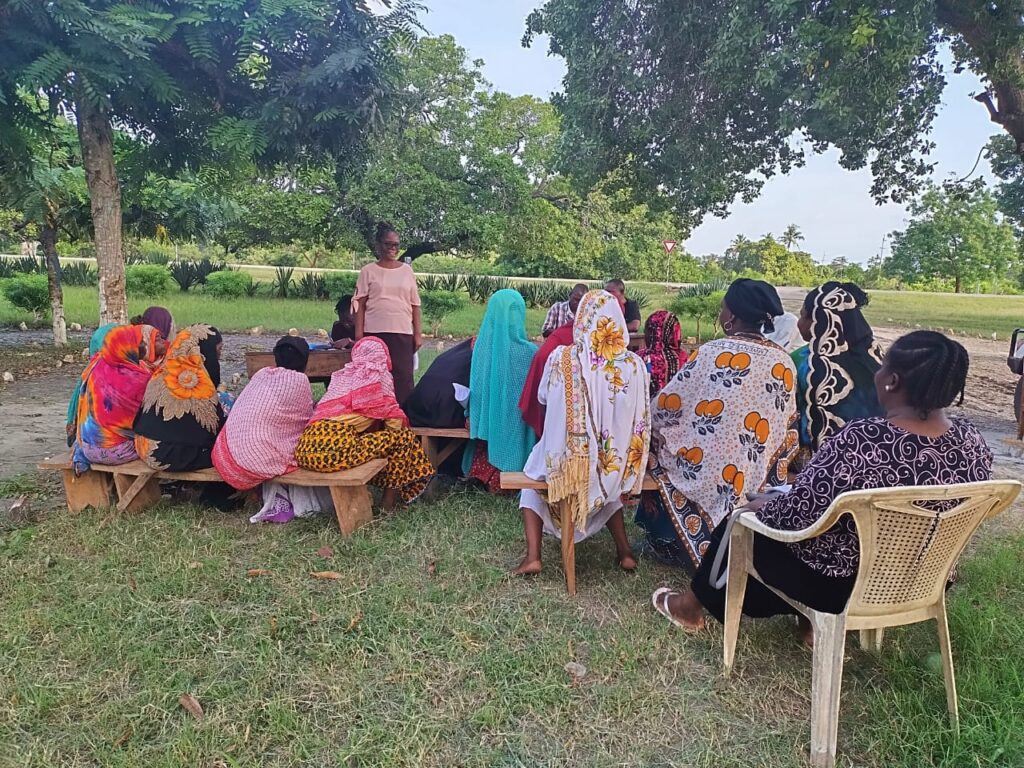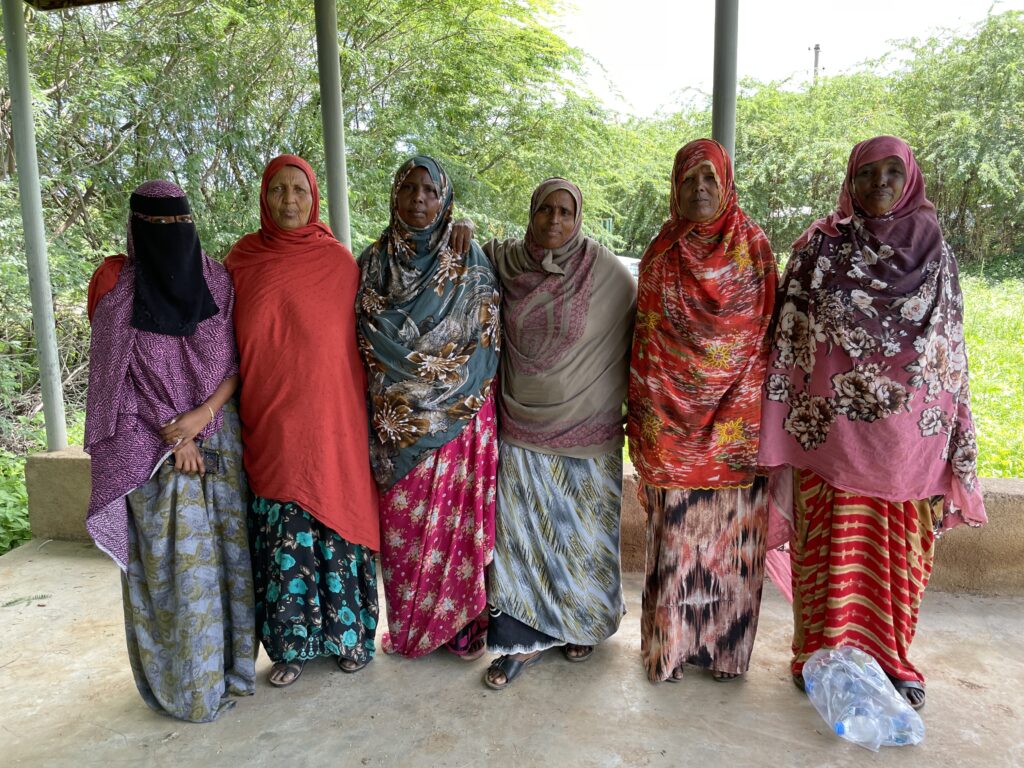Centering Indigenous Women in Conservation Activities: The Vital Role of Gender Equity in Forest Conservation
By SJ Renfroe, WI-HER Senior Associate

The world’s forests are dying. Since it began tracking data in 2002, the Global Forest Watch has noted a consistent decline in forested land. This is mainly due to extractive industries and forest clearing for agricultural use. Yet forests are essential in reducing the impact of greenhouse gas and maintaining the world’s remaining forests is vital to staving off climate degradation. Many forest conservation projects exist, yet, as forested land continues to decrease, how can these efforts be improved?
Indigenous communities live in environments representing approximately 80% of the world’s remaining biodiversity and thus protect critical ecosystems for combating climate degradation. Evidence shows that women’s involvement in local forest conservation efforts greatly increases the success of this work; when climate change policy interventions include women’s voices, they are measurably more effective. Additionally, the 2011 UNDP Human Development Report highlights a direct correlation between country contexts with higher rates of gender inequality and higher levels of environmental degradation. Supporting Indigenous women-led conservation efforts is fundamental to improving conservation efforts and protecting our world’s remaining forests.
The Connection Between Indigenous Populations and the Environment
Around the world, Indigenous women leaders are rising up as ecological activists, safeguarding their communities’ environments and fighting for the forests their communities have stewarded for generations. Often, Indigenous cultures have developed highly effective environmental safeguarding techniques passed down through traditional practices. This reciprocal relationship between Indigenous communities and forests is further deepened by Indigenous belief systems, which often hold their natural environments in great respect.

The relationship between Indigenous peoples and their environment also heightens their vulnerability to climate change. Indigenous communities, especially women, have experienced gender-based violence, oppression, and discrimination, which can be exacerbated by climate degradation. Across the world, governments have vastly reduced Indigenous peoples’ access to their traditional lands, marginalizing them economically and politically. In one example, the Norwegian government stole territory from the indigenous Sámi reindeer herders and converted this land for farming use.
As emphasized in USAID’s Policy on Promoting the Rights of Indigenous Peoples, it is essential for development projects to work in partnership with Indigenous communities to avoid reinforcing marginalization and disempowerment of Indigenous peoples in protecting their own environments. When considering conservation activities and projects, we must commit to prioritizing Indigenous peoples, particularly Indigenous women, in forest conservation and following their lead to protect these essential strongholds of biodiversity; we can do this by applying best practices and utilizing effective methodologies like iDARE.
Recommendation: Support Existing Conservation Efforts
Conservation activities must be highly localized and context-specific. One of the most important ways to support Indigenous women’s conservation efforts is to learn from and support their existing programs. A few examples of these programs include:
- The Queensland Indigenous Women Rangers Network (QIWRN) is an organization based in Australia, led by Indigenous women, government agencies, NGOs, and land councils, among other stakeholders. It is dedicated to supporting and enabling Indigenous women rangers to protect their environment.
- The Guajajara “women warriors” from the Caru Indigenous Territory of Brazil have been fighting to protect their forests from deforestation by patrolling their lands to prevent loggers from encroaching on protected areas.
- The Paran Women’s Group in Kenya is a collective of Indigenous women that aims to protect Indigenous women and girls and their communities through conservation efforts and projects that support adaptation to and mitigation of climate change.
- The Aguaruna Huambisa Council (CAH) in Peru, comprised of the Awajún and Wampis peoples, works to defend the Peruvian Amazon. CAH also has programming to teach Indigenous women about their rights, as initiated by its first female President (elected in 2017), Raquel Caicat.
- The Coordinator of Mesoamerican Women Territorial Leaders (CMLT) is an Indigenous women-led organization that provides territorial financing opportunities to Indigenous women to support traditional and regenerative forest management projects.
Additionally, many development projects currently focus on Indigenous women’s leadership in conservation efforts, among which are the following examples:
- USAID Tuhifadhi Maliasili (“Preserve Natural Resources” in Kiswahili) utilized key informant interviews and focus group discussions to seek out the perspectives and ideas of rural populations and indigenous groups, including Maasai women, on conservation-related challenges, impacts, and potential solutions in their communities in Tanzania.
- Through the Fiji REDD+ program, WI-HER addressed the correlation between conservation projects, land use, and gender-based violence by partnering with the Government of Fiji and Marstel Day.WI-HER centered Indigenous women’s voices through key informant interviews and applying our iDARE methodology.
- Bae Elma Bauzon (Manobo tribe), Bae Virgilia Juagpao (Mamanwa-Manobo tribe), and Ka Ningning Aztovesa (Dumagat people) are working to protect their forests through a European Commission-funded project implemented by Birdlife International and the Haribon Foundation.
- The Women’s Earth Alliance supports women-led conservation efforts through projects in Indonesia, Sumatra, and India to strengthen the capacity of Indigenous women’s work to protect their forests.
- The Women’s Earth & Climate Action Network, International (WEA) supports women in their efforts to protect forests and halt extractive industries’ practices. As part of this work, WEA supports Indigenous women leaders in accessing and advocating at international platforms such as the UN to protect their home environments.
What More We Can Do to Amplify the Role of Indigenous Women in Conservation
Each of us has a role to play in centering Indigenous women in conservation efforts:

Individuals: We can research and learn about the Indigenous peoples who have stewarded the lands we live on and investigate what Indigenous ways of protecting the environment exist; then, we can support ongoing projects through our time, donations, or amplifying their work through social media and other forums. One easy method of learning which Indigenous group’s territory we live on is by using the Native Land map.
Local conservation organizations: Local organizations can partner with nearby Indigenous communities in conservation efforts. Development organizations must consult Indigenous communities, especially women, throughout the process of creating and implementing projects in which Indigenous peoples are stakeholders; this requirement is enshrined within the USAID Policy on Promoting the Rights of Indigenous Peoples.
Governments: Governments must address the historical marginalization of Indigenous women and ensure their voices are heard in policy-making spaces; this can be accomplished by creating Indigenous women’s consultation groups or technical working groups with multiple stakeholders (including government agencies, Indigenous women, and civil society) to build diverse collaboration in policy making.
Development organizations: To ensure development projects are locally led, fostering partnerships with Indigenous stakeholders is critical to the project design and implementation. To do this, development organizations must consult best practices and review successful projects. For example, WI-HER has utilized a rapid assessment methodology, which includes a desk review, key informant interviews, and focus group interviews, to understand the landscape of conservation-related challenges and impacts related to gender, youth, and other excluded persons. With iDARE teams of local stakeholders, including women and youth, solutions were developed by the communities themselves, ensuring that response strategies integrated GESI concerns.
Dr. Stella Kasindi Mwita, Technical Advisor with WI-HER, emphasizes, “Traditional and community women are usually living around or targeted by conservation projects to support them in their life as they depend on the products of the forest or ocean for their life. Usually, they are educated on how best to support themselves and their families using the products of their surroundings, for example, beekeeping, chicken rearing, or goat keeping as an alternative to cutting forests and destroying the environment. The awareness created by different conservation projects capacitates them to be involved in women groups to create financial independence.”
Not only is centering Indigenous women in conservation projects essential for the success of those projects but also vital in pursuing gender equity.
Indigenous women are fighting for the life of our forests and planet. As the guardians of these environments for generations, the knowledge and approaches of Indigenous communities are vital to forest conservation.
At WI-HER, we actively engage indigenous women in environmental stewardship by amplifying their voices and fostering collaborations that prioritize and bolster their leadership in conservation. We encourage our peer organizations, as well as individuals, CSOs, governments, and international organizations alike to likewise seek out Indigenous women’s input and ideas and continue learning from and supporting Indigenous women-led conservation initiatives.